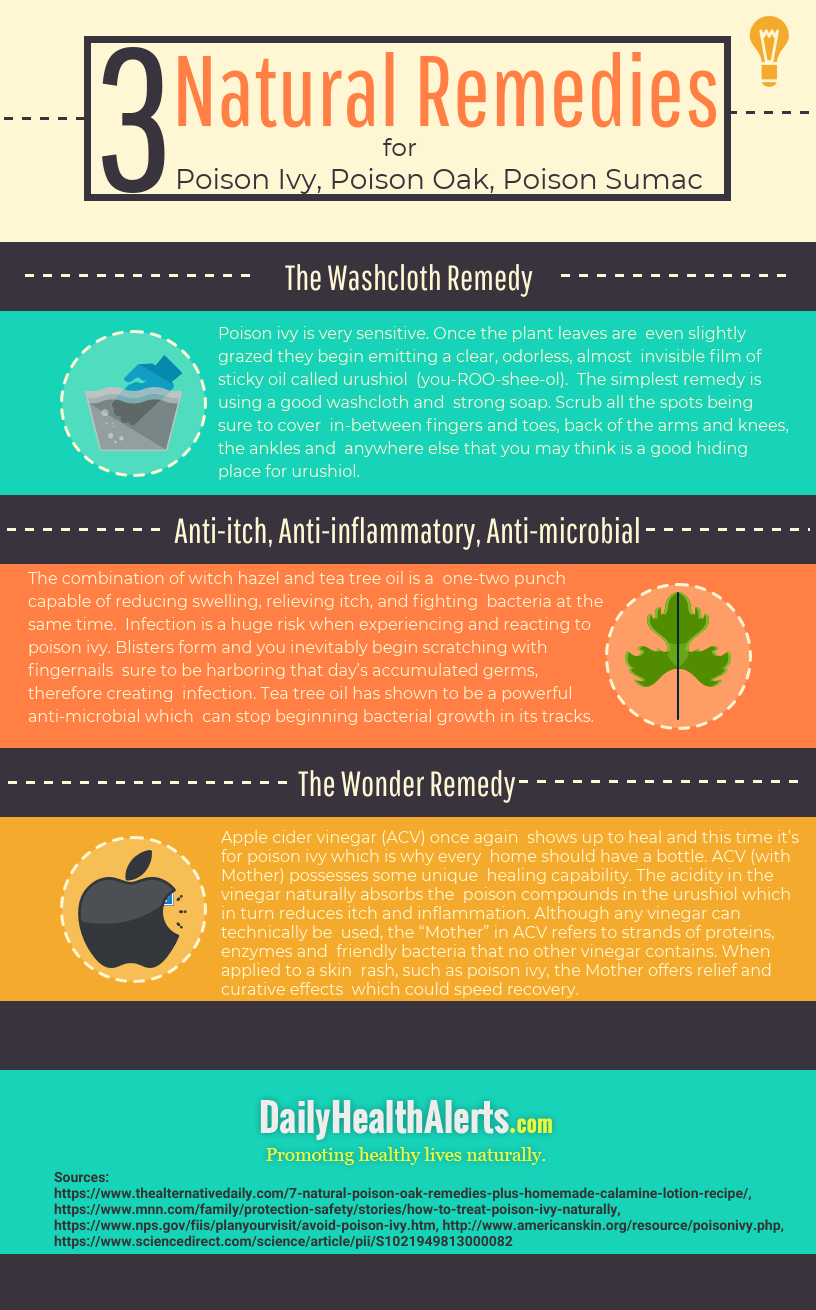This summer be sure to watch out for pesky poisonous plants that can really ruin your day. The most prominent are called rhus family plants (poison ivy, oak and sumac) and according to the American Skin Association, approximately 80-85% of the population are allergic to it and about 50 million people are exposed annually.
Before you go hiking, horseback riding, or just to your child’s soccer game take note of these 3 natural remedies for poison ivy, oak, or sumac. You’ll be glad you did.
Spot It and Steer Clear
Before you need to use any of these natural remedies, being able to spot and steer clear of such poisonous plants should be your first concern. Poison ivy often grows in patches, particularly at the trunk of trees. There is always an independent stem with three leaflets on each and the leaves can often be shiny. This natural design has prompted the term, “Leaves of three, let it be” to remind yourself and others to stay away.
It is always best to wear long pants, sleeves, and high socks while hiking. If long pants are not possible, make sure you at least wear high socks to protect your legs which are front and center when it comes to exposure. Know what you are walking through and how to avoid it but if nature lashes out and you start itching, try one or more of these 3 natural remedies for poison ivy, oak, or sumac.

The Washcloth Remedy
Poison ivy is very sensitive. Once the plant leaves are even slightly grazed they begin emitting a clear, odorless, almost invisible film of sticky oil called urushiol (you-ROO-shee-ol). This compound acts as a self-defense mechanism to avoid leaves being eaten by predators, it is also responsible for causing a reaction on your skin.
Urushiol can be transferred without even touching the plant as its sticky, odorless properties easily attach to animal fur, gardening tools and clothing. If you feel you’ve been exposed to poison ivy it is important to wash yourself and anything else exposed, thoroughly. This includes clothes, pets, tools and even car seats as urushiol has a real knack for covering anything it can.
Washing your body after exposure is essential, however most people do it incorrectly. Think of urushiol as invisible car grease or tree sap. These cannot be removed by simply using soap and water, it’s too strong. Urushiol is the same and this is why most people break out in a poison ivy rash between their fingers, on the back of their arms and behind the knees. This is because the urushiol was not adequately rubbed off.
The simplest remedy is using a good washcloth and strong soap. Scrub all those spots mentioned being sure to cover in-between fingers and toes, back of the arms and knees, the ankles and anywhere else that you may think is a good hiding place for urushiol. Do this within one to three hours after exposure and your chances of breaking out in itchy pustules could be significantly diminished.
Anti-itch, Anti-inflammatory, Anti-microbial
The combination of witch hazel and tea tree oil is a one-two punch capable of reducing swelling, relieving itch, and fighting bacteria at the same time.
Infection is a huge risk when experiencing and reacting to poison ivy. Blisters form and you inevitably begin scratching with fingernails sure to be harboring that day’s accumulated germs, therefore creating infection. Tea tree oil has shown to be a powerful anti-microbial which can stop beginning bacterial growth in its tracks.
A study published in the Journal of Food and Drug Analysis (Volume 21, Issue 2, June 2013, Pages 169-176) concluded that,
“In terms of its antibacterial efficacy, TTO-L [tea tree oil isolated from leaves] significantly decreased acne formation via inhibiting the growth of acne-related bacteria, P. acnes and S. aureus, and reducing acne-caused inflammation.”
Acne symptoms are very similar to poison ivy which makes this combo a good fit. Mix which hazel and tea tree oil together, dab on a cotton ball and generously apply to affected area. If it feels too strong, dilute with distilled or cooled boiled water.
The Wonder Remedy
It’s back! Apple cider vinegar (ACV) once again shows up to heal and this time it’s for poison ivy which is why every home should have a bottle. ACV (with Mother) possesses some unique healing capability. The acidity in the vinegar naturally absorbs the poison compounds in the urushiol which in turn reduces itch and inflammation.
Although any vinegar can technically be used, the “Mother” in ACV refers to strands of proteins, enzymes and friendly bacteria that no other vinegar contains. When applied to a skin rash, such as poison ivy, the Mother offers relief and curative effects which could speed recovery.
Soak a cotton ball in ACV and apply generously to affected area. In addition to poison absorption, anti-inflammation and anti-itch results, ACV will also dry up blisters before they can spread.
The smell of vinegar is not for everyone so apply first thing in the morning and let dry before dressing as the smell will dissipate. Covering the area with gauze may help as well. ACV has been effective in many other applications such as: managing diabetes by lowering blood sugar levels, gastrointestinal difficulty including acid reflux, weight loss, and increasing heart health.
Keep these 3 natural remedies for poison ivy, oak, or sumac in your home no matter where you live. The poisonous plants can grow just about anywhere so stay prepared and enjoy nature safely.